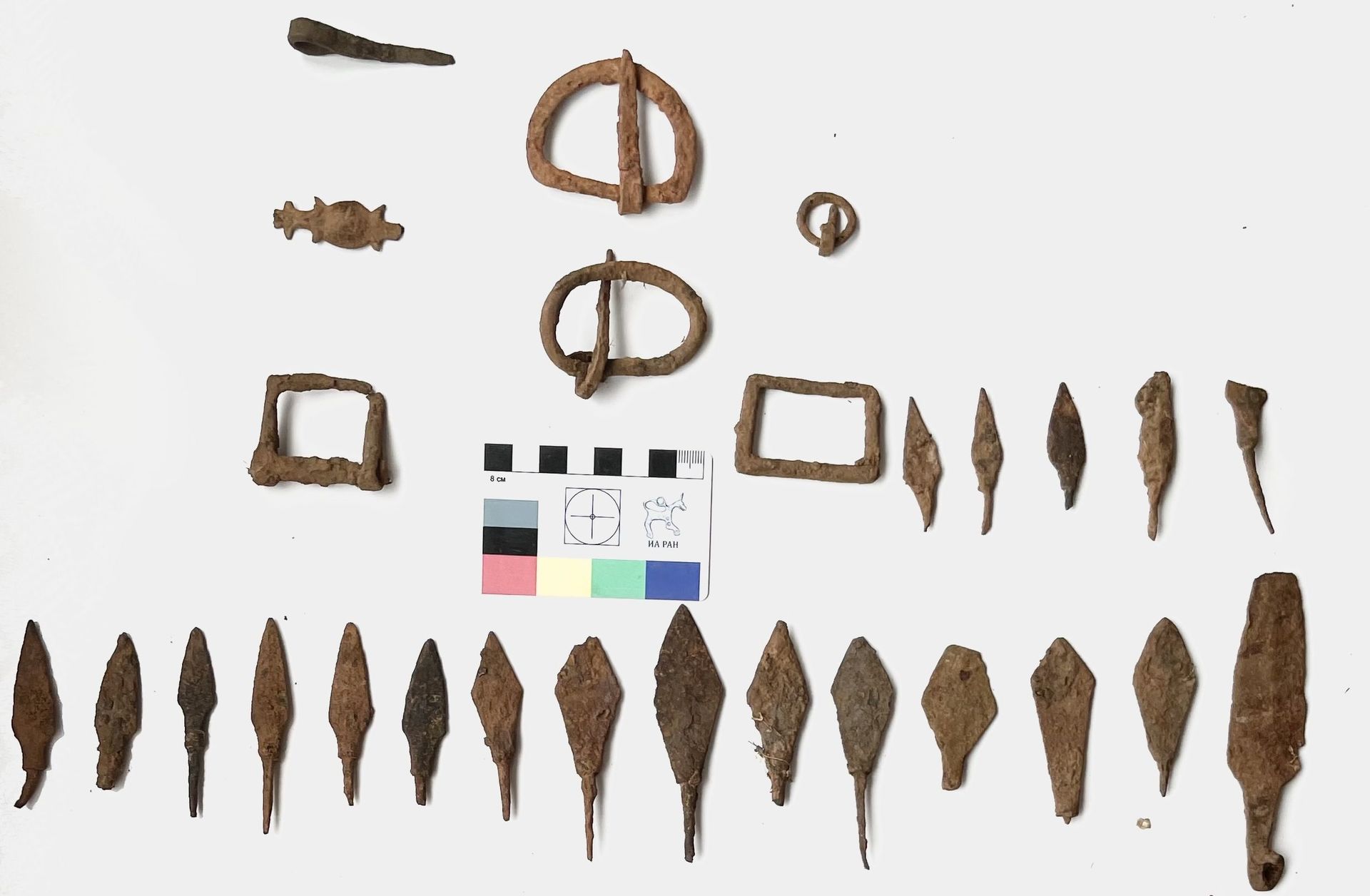Experts from the Institute of Archeology of the Russian Academy of Sciences and the State Museum-Reserve "Kulikovo Pole" have determined the place of the last stage of the Sudbischenskaya battle - one of the most famous battles of the era of Ivan the Terrible. The battlefield of the Russian army and the Crimean horde on the border of the modern Tula and Oryol regions was helped by local divers. This was reported by the press service of the Institute of Archeology of the Russian Academy of Sciences.
In April 2021, members of the Oryol diving club examined the ancient waterways of the small river Gogol, flowing in the Efremovsky and Kamensky districts of the Tula region and the Novoderevenkovsky district of the Oryol region.
They found many arrowheads, a spearhead and details of a horse harness at the bottom, after which they told about their discovery to archaeologists.
In the finds of the Oryol divers, scientists identified weapons of the era of Ivan the Terrible, and when they went to the place, it became obvious that we were talking about the artifacts of the Battle of Sudbischen.
From written sources, scientists knew that on June 24 and 25 (according to the old style), 1555, at Sudbischi, a battle took place between a Russian detachment under the command of boyar Ivan Vasilyevich Sheremetev and the army of the Crimean Khan Devlet Girey.
Miniatures from the Observational Codex of Ivan the Terrible.
Left: "About the sending of the sovereign to the Crimean herds ...".
In the center: "The first day of the Battle of the Sudden."
Right: "Devlet Giray's campaign to Russia"
© Press Service of the State Museum-Reserve "Kulikovo Pole"
Sheremetev's detachment of 17 thousand soldiers entered the battle with the 60-thousand-strong khan's horde.
For two days the initiative passed from hand to hand.
The vanguard of the Crimean army was defeated, but Sheremetev was seriously wounded.
Under the pressure of the horde, voivods Alexei Basmanov and Stefan Sidorov rallied the remnants of the army and organized defense in hastily erected field fortifications, and the khan was forced to stop the invasion and retreat to the Crimea.
As archaeologists note, in those days Sudbischi was a tract in the Wild Field on the Muravsky Shlyakh, along which the plundering detachments of the steppe dwellers marched.
Based on the works of the Tula ethnographers of the late XIX - early XX centuries I.P.
Sakharova and I.F.
Afremov, scientists knew that the battle with the Crimean horde took place somewhere near the village of the same name.
In 1995, a memorial was opened in Sudbischi in memory of the battle, but for a long time the exact place of the battle was not localized, according to the press service of the Institute of Archeology of the Russian Academy of Sciences.
Scientists who arrived at the Gogol River examined a vast coastal strip and identified the place of the battle - a ravine, from which ancient artifacts were washed into the river.
Presumably, in the investigated area, the remnants of the Russian army defended themselves in a fortification with notches - wooden defensive structures.
Part of arrowheads, girth buckles, belt pads of late medieval types found near the village of Sudbischi
© Press Service of the State Museum-Reserve "Kulikovo Pole"
Researcher of the Department of Archeology of the Migration Period and the Early Middle Ages of the Institute of Archeology of the Russian Academy of Sciences spoke about the details of the study.
Oleg Radyush.
“In the course of a systematic search, the site of a clash was discovered, which, judging by the materials received, took place in the middle of the 16th century.
Geodetic survey of the terrain with precise referencing of all found objects was carried out using a tacheometer and GPS receivers.
Among the finds - more than 150 arrowheads of various types, a fragment of a spear sleeve, lead bullets and buckshot, a fragment of a blade of a blade weapon, a quiver hook, belt pads and girth buckles, horseshoe nails, fragments of shoe and horse shoes, a silver coin of Ivan Vasilyevich, minted to 1550 ", - explained the scientist.
Silver money of John Vasilievich IV.
© Press Service of the State Museum-Reserve "Kulikovo Pole"
Scientists from the Kulikovo Pole State Museum-Reserve, headed by Artyom Krukhmal, have joined the research, and they have accumulated a wealth of experience in researching ancient battlefields.
Along with the artifacts handed over by the divers, more than 300 finds were found.
According to Tula archaeologists, large-scale excavations will be organized in the near future, which will become a new stage in the historical and archaeological study of the defense system of the southern borders of the Moscow state in the 16th-17th centuries.
At the site of the battle, they will try to determine the burial places of the dead and restore the picture of two dramatic summer days in 1555, and the battlefield itself will be carefully guarded from "black diggers".

